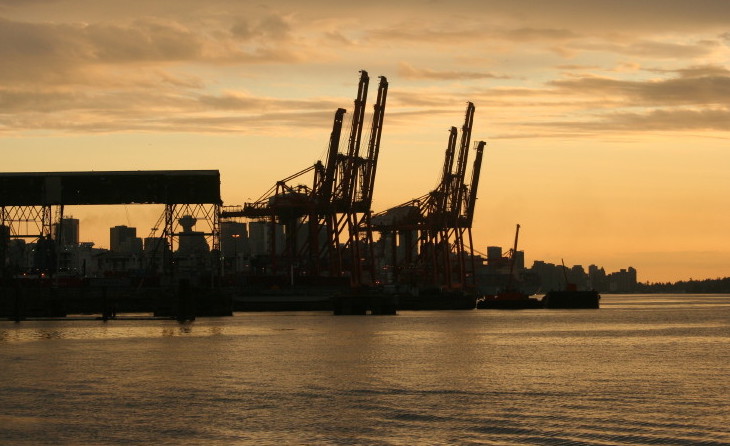(VANCOUVER, British Columbia) — The Vancouver Fraser Port Authority, together with partners from across the port community, are testing various low- and zero-emission fuels and technologies at the Port of Vancouver as part of the port authority’s efforts to phase out all port-related emissions by 2050 in support of the government of Canada’s goal to achieve net-zero emissions by 2050.
Through the Low-Emission Technology Initiative, a joint initiative between the port authority and the province of British Columbia, the port authority and the province have each committed $1.5 million in funding to support the port community’s transition to low-emission energy, including the testing of battery-electric-powered terminal tractors; 100 percent biodiesel on commercial ferries; a hydrogen-powered crane; and 100 percent renewable diesel on a terminal locomotive and one of the port authority’s patrol boats.

“Charting our course toward a zero-emission port starts with collaborative efforts like these — between the port authority, the port community and government — to test innovative new low-emission fuels and technologies that reduce emissions while keeping trade moving through the Port of Vancouver,” said Robin Silvester, president and chief executive officer of the Vancouver Fraser Port Authority. “We plan to continue taking tangible steps, in close collaboration with our partners across the port, toward our goal of phasing out all port-related emissions by 2050.”
Efforts to test low-emission fuels include a six-month trial of 100 percent renewable diesel on one of the port authority’s patrol boats, Takaya, making the port authority the first federal agency in Canada to run a vessel on 100 percent renewable diesel. Renewable diesel is a non-fossil fuel energy source derived from a range of organic sources such as vegetable oils, animal fats and food waste. Using renewable diesel can result in up to 80 percent less net greenhouse gas (GHG) emissions than regular diesel on a life-cycle basis. Shell Canada, a partner on this project, supplied the renewable diesel and provided significant technical expertise.
Across the Port of Vancouver, many other low-emission fuels and technologies are being tested by members of the port community, such as:
• Viterra, which operates two grain terminals on the south shore of Burrard Inlet, recently began a six-month trial of 100 percent renewable diesel on one of its locomotives at its Pacific Terminal. The trial, which is funded in part by the port authority and the province, is intended to test the use of low-emission renewable diesel as a replacement for regular diesel. Shell Canada supplied the renewable diesel.
• DP World, which operates four container terminals across British Columbia, recently installed five zero-emission electric rail-mounted gantry cranes at its Centerm container terminal on the south shore of Burrard Inlet and is also in the final planning stages of retrofitting a hydrogen fuel cell-powered rubber-tired gantry crane. This retrofit will significantly reduce DP World’s emissions and confirm a path forward to widespread decarbonization of the company’s rail-mounted gantry crane fleet. At its Centerm terminal, DP World also installed additional shore power technology, which now enables two containerships at a time to turn off their engines and plug into hydroelectric power, reducing greenhouse gas emissions. At the U.N. Climate Change Conference (COP 27) earlier this month, DP World announced plans to invest up to $500 million across its businesses to cut carbon dioxide emissions by nearly 700,000 tonnes over the next five years.
• Seaspan Ferries, which operates a commercial ferry service between its terminals on Vancouver Island and the lower mainland, recently began running all six of its commercial ferries on 100 percent biodiesel, following the success of a pilot project launched last year with the support of the port authority and the province. On Seaspan’s tugboat fleet, the company also recently began using 100 percent soy-based biofuel and expects to transition to using biofuel on all its harbor ship-docking tugs before the end of 2022. At Seaspan Ferries’ Tilbury Marine Terminal on the Fraser River, the company has also introduced two battery-electric powered terminal tractors, which were procured with funding support from the port authority and the province. All three of Seaspan’s shipyards have established a GHG baseline for emissions.
“We applaud our partners across the port community for their leadership in creating a more sustainable future at the Port of Vancouver. It’s fantastic to see so many efforts underway by industry to test and adopt new fuels and technologies that, together, will help pave the way toward creating a zero-emission port by 2050 while supporting our vision for the Port of Vancouver to be the world’s most sustainable port,” said Silvester.
– Port of Vancouver
